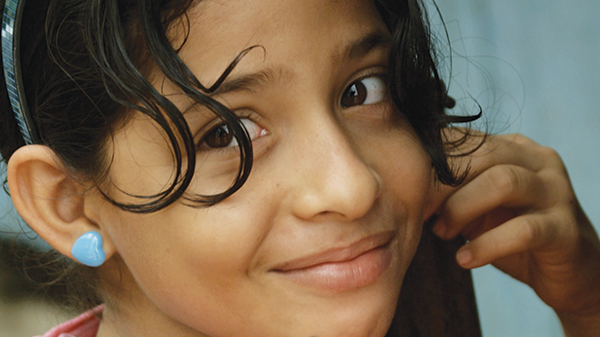
Le terme «éducation inclusive» est celle qui effraye certaines personnes avec ses implications.
Comment les enseignants pourraient-ils prendre du temps pour plusieurs plans de cours pour différents styles d'apprentissage? Comment pouvons-nous atteindre les enfants atteints de dyslexie dans nos programmes de lecture? Comment enseigner aux enfants avec des niveaux de réussite très différents dans une classe?
Où est le financement?
Pourquoi est-ce notre problème?
Que diriez-vous si nous remplacez les «étudiants par handicaps» par des «filles» ou des «garçons» ou des «enfants à faible statut socio-économique?"La réponse est simple: Vous ne pouviez pas négliger d'éduquer les filles ou les garçons. Vous ne pourriez jamais refuser l'éducation à un enfant vivant dans la pauvreté.
Pourtant un estimé 84 à 135 millions d'enfants handicapés sont hors de l'école dans le monde.
La communauté du développement international fait très peu pour atteindre les étudiants handicapés. Et si nous continuons à utiliser les mêmes modèles qui nous ont servi avec succès au cours de la dernière décennie, Nous continuerons à ne pas atteindre ces étudiants.
L'argument typique contre l'éducation inclusive est le coût élevé perçu. Mais c'est l'attitude plutôt que le coût qui limite vraiment le succès potentiel des étudiants handicapés.
Un modèle inclusif
Le concept de Conception universelle pour l’apprentissage (CDU) est quelque chose que les praticiens de l'éducation internationale peuvent se tourner comme nous essayons de rendre l'apprentissage plus accessible et de meilleure qualité pour tout le monde.
UDL encourage les éducateurs à concevoir des programmes, salles de classe et programmes avec une variabilité humaine naturelle à l'esprit. Développé par Myere, Rose et Gordon, il est basé sur une compréhension que le cerveau est composé de Trois réseaux principaux.
Le affectif Dicte comment nous surveillons nos environnements internes et externes pour définir les priorités et s'engager dans l'apprentissage - ou en d'autres termes, Notre motivation. Le reconnaissance détermine comment nous détestons et percevons les informations dans notre environnement et les transformons en connaissances utilisables. Et le stratégique informe comment nous planifions, Organiser et initier une action utile.
Les tendances des neurosciences ont démontré la nature complexe du cerveau et nous ont montré que chaque élève individuel a des capacités et des expériences très différentes qu'ils apportent à la classe.
Nous pouvons, et devrait, Attendez-vous à cette variabilité et planifiez en conséquence de fournir un apprentissage individualisé pour tous les élèves.
Plutôt que de «rénover» une leçon lorsqu'un étudiant handicapé apparaît, Nous prévoyons l'étudiant handicapé et concevons notre travail en conséquence.
Avec ce genre d'approche, Les étudiants handicapés ne sont qu'un segment d'une population diversifiée d'enfants qui méritent une approche sur mesure de l'apprentissage.
Exemples de succès
Aux États-Unis, Les écoles conçues sur un format inclusive ont rencontré un grand succès. Par exemple à Boston, le École Henderson sert une population étudiante dans laquelle 34 pour cent ont diagnostiqué des handicaps.
Une fois l'une des écoles les moins performantes du Massachusetts, L'école Henderson est devenue l'une des écoles élémentaires les plus performantes de l'État. Enseignants, Le personnel et les parents attribuent le succès de l'école au modèle inclusif. Lorsque vous concevez une salle de classe pour que les élèves qui luttent le plus réussiront, Tout le monde profite.
Au Brésil, le travail de Différent démontre que l'éducation inclusive peut être étendue à toutes les salles de classe traditionnelles. Avec le soutien du ministère brésilien de l'Éducation et d'autres organisations, Diversa relie les éducateurs via une plate-forme en ligne avec des idées et les meilleures pratiques pour les aider à s'adapter aux élèves handicapés grâce à des plans de cours et des activités scolaires modifiés.
L'organisation a travaillé avec le Colegio Coronel Pilar, Par exemple, qui s'inscrit maintenant 67 les étudiants handicapés hors de sa population totale de 1042.
«Au jour le jour, nous avons 30 étudiants dans une pièce et efficacement, chacun a sa place, façon de timing, et les stratégies d'apprentissage,»Dit Eliana Menezes, un coordinateur de l'éducation spéciale, dans Une vidéo sur l'approche inclusive de l'école.
«Pendant longtemps, il n'y a pas eu un tel engagement à enseigner aux personnes handicapées,"Dit Roberta Ondordiri, le coordinateur de l'éducation régionale. «Aujourd'hui, nous avons cet engagement.»
Conception pour l'apprentissage inclusif
Tout comme il est plus facile de construire un bureau avec un ascenseur, d'ajouter un ascenseur à un ancien bâtiment et obsolète, Il est donc plus facile de concevoir un projet en tenant compte du large éventail d'étudiants qui seront impliqués.
Lors de la conception d'un nouveau projet, L'utilisation des directives de l'UDL peut aider à préparer les étudiants handicapés. Tous les projets ne doivent pas répondre aux exigences de chaque apprenant, Mais les garder à l'esprit aidera à développer des environnements d'apprentissage flexibles.
Après tout, Les troubles d'apprentissage n'existent pas au sein de l'individu, Mais à l'intersection entre l'individu et son environnement.